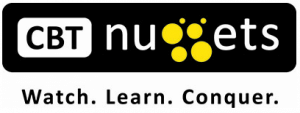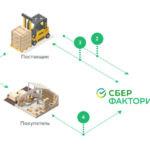Год выпуска: 2012
Производитель: CBT Nuggets
Автор: Anthony Sequeira
Продолжительность: 09:42:37
Тип раздаваемого материала: Видеоурок
Язык: Английский
Стоимость: 1999 рублей
It seems like the whole world is going wireless. After watching Michael Shannon's CCNA Wireless training course you'll be ready to control wireless technology.
Michael's training is appropriate for anyone considering implementing a Cisco Wireless solution for their company, a partner, their customer, or their clients... even if its simply for a guest or lobby VLAN. In addition, anyone who needs to setup a wireless LAN for scenarios like a hotel, airport, retail site, or medical facility will find this training invaluable.
Soon you'll be ready to deploy your own stand-alone or LWAPP wireless LAN and use the CLI or graphical web-based tools to configure your solution. You'll also be well prepared for the CCNA Wireless exam and gain solid grounding towards respected Cisco CCNP Wireless certification.
[wpspoiler name="Подробное описание" ]1. Introduction to the CCNA Wireless Course (00:11:43)
This opening Nugget is an overview of the Cisco update course, the certification, as well as the main topics to be covered.
2. Wireless LANs Defined (00:40:43)
This lesson will explore the overall comparisons between wired and wireless LANs along with wireless network types. An explanation and comparison is also made between ad-hoc and infrastructure modes. Finally, the concept of the service set is seen along with a survey of the wireless standards bodies.
3. Introduction to WLAN Principles (Part 1) (00:25:16)
This first of two Nuggets on WLAN principles covers the following concepts: wireless spectrum, frequency, amplitude, free path loss, absorption, reflection, and multipath.
4. Introduction to WLAN Principles (Part 2) (00:21:28)
This second Nugget on LAN principles explores: scattering, refraction, line of sight (LOS), fresnel zones, RSSI, and SNR.
5. RF Mathematics (00:27:28)
Well... nobody said there "wasn't going to be any math" so let's learn about watts, milliwatts, decibels, dBm, dBi, dBd, and EIRP.
6. Antenna Communications (00:31:24)
This Nugget covers the often forgotten workhorse of the wireless implementation: the antenna. What would we do without it? Not much in our wireless network for sure. This lesson addresses the principles of antennae (or is it antennas?), common antenna types, and antenna connectors and hardware.
7. Spread Spectrum Technologies and Media Access (00:27:46)
Have you ever heard of Heddy Lamarr? Go look her up on your favorite search engine then come back and watch this Nugget on spread spectrum concepts, DSSS, OFDM, and channel overlap & re-use.
8. Wireless Regulation Bodies, Standards, and Certifications (00:28:45)
In this interesting module we will expand on some of the entities we were introduced to in Lesson 2 of this course. We'll explore the various regulatory bodies, after all, we can't have wireless anarchy and then learn about the various IEEE standards including: 802.11, 802.11b, 802.11g, 802.11a, and 802.11n.
9. Cisco Unified Wireless Network Architecture (00:23:13)
Are you like George Costanza? Did you always want to pretend to be an architect? Here's your chance to get closer to becoming a Wireless Network Architect as you learn about CUWNA, LWAPP, various components, and the management layer.
10. Wireless Media Access (and VLANs) (00:34:49)
This Nugget really gets under the hood at the actual behavior of 802.11 frames. Topics covered in this lesson include: wireless frame types and IFS periods, basic frame transmission, wireless frame headers, a survey of wireless frames, some wireless road trips, and using VLANs for wireless.
11. Discovery and Association, Operational Modes and Roaming (00:26:16)
Here's an action-packed Nugget for you. Lets learn all about LWAPP modes, wireless LAN controller discovery and joining, mobility groups, and roaming at layer 2 and at layer 3!
12. Configuring the Cisco 4400 Series Wireless LAN Controller (00:33:46)
Let's get some hands-on demonstation of the 4402 WLC. We'll explore ports and interfaces, the 4402/4404 command-line-interface, initial configuration and setup, and survey the web-based GUI configuration manager for the controller.
13. Controller-Based Network Management (00:28:02)
This Nugget is a continuation of the previous one as we investigate monitoring the network through the controller, monitoring and managing APs, monitoring rogues, client monitoring, and management, as well as internal DHCP scope configuration.
14. Configuring Standalone Access Points (00:30:19)
Now is your chance to learn how to connect to a standalone AP, use the express setup web interface, perform setup of security setup, and converting to LWAPP mode.
15. Wireless Mobility Express (00:24:08)
This Nugget explores the small business solution from Cisco known as the Cisco Mobility Express. We look at product options for the initiative, the 521 WL Express Lightweight AP, the 526 Mobility Express Controller, setting up the solution through the CLI, and using the web-based GUI management tool.
16. Wireless Clients (00:33:03)
This important CCNA wireless Nugget covers common operating system configuration utilities, the Cisco ADU, Cisco ACAU, and the Cisco SSC Supplicant.
17. WLAN Security (Part 1) (00:45:16)
Here is one of the most vital aspects of wireless networking: security. This first security module addresses threats to wireless networks, an overview of WLAN security, establishing 802.11 security, centralized authentication, and Local EAP.
18. WLAN Security (Part 2) (00:38:17)
This is a continuation of part one where the following protocols are covered: EAP-TLS, EAP-FAST, PEAP, and WPA/WPA2. Finally, the topic of configuration on WLC and the client is covered.
19. Cisco WCS Administration (00:20:43)
You'll find this examination of the WCS really interesting. Learn how wireless enterprises are managed and monitored. Understand the benefits of WCS and the Locator Appliance.
20. WLAN Maintenance and Troubleshooting (00:30:12)
This final Nugget explores: maintaining the WLC, LWAP, and WCS; troubleshooting using visuals; common WLC and client issues; hidden node and exposed node; and several troubleshooting techniques and tools.[/wpspoiler]


